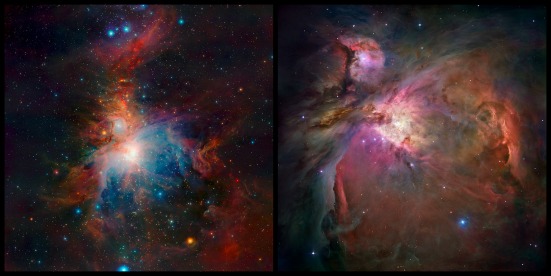From Jason Witherspoon, Program Leader:
Most of the time when I am outside I spend a lot of time looking down. I have a background in horticulture and it makes me feel comfortable to know the plants around me. When I’m in my yard I’m identifying weeds and if I’m walking a trail I’m trying to ID native plants, looking out for snakes and generally trying not to fall on my face. It is an empowering feeling to make sense of your surroundings. But when the sun sets, that all changes. The ground underfoot cannot be trusted and the trees are now the shadowy formless perches of all kinds of creatures. There is not much for the horticulturist in me to grab onto for comfort. So I looked up.
I have always been impressed with the early astronomers. You know, back in the day before reality TV and ESPN. With the lack of light pollution every evening must have grabbed the curiosity of many. For quite a few people they had the patience and made the time to sit and observe. Recently I have felt that same pull. Instead of eating dinner and watching TV at the end of the day I’ve been putting my coat back on and sitting in the dark on the back porch. And I was not bored. I started by reading a little ahead of time. I learned to find Orion and The Big Dipper and use the stars in those constellations to find other stars. Pretty soon the sky was not filled with nameless dots of light but Red Giants, nebulas and galaxies. I had found my White Oak and May Apple of the sky. I had made sense again of my surroundings. Not only that but I have found an intellectually stimulating pastime that will not run out of new material. I can do it by myself and practice solitude or I can invite a bunch of friends over, grill some meat, toast some marshmallows and share a little bit of my sky with them.
My experience has inspired me to start a new Stargazing program through the department to share this interest with others. You can come to as few or as many of the stargazing sessions as you want and enjoy taking a few moments to just look up together. The program is free of charge and open to the public. You don’t need any special equipment, but if you have binoculars please bring them. To sign up for a session please visit RecDesk (alamance.recdesk.com).
What You’ll See & Learn
We hope that you’ll join Jason for the new Stargazing program! In the first couple of sessions, he will share what he has learned about major constellations and points of interest such as The Big Dipper (an asterism that’s part of the constellation Ursa Major), Polaris (the North Star, compass to the ancient world), Orion (one of the most recognizable constellations in the sky), and how to use these “road markers” to find other constellations and stars of interest. In the process, you will have a chance to view the Orion Nebula (pictured in the photos); the constellations Cassiopeia and Andromeda (both observed by Greek astronomer Ptolemy in the 2nd Century); and the planet Jupiter and some of its moons. Jason will also share resources for learning more about astronomy. This program is intended to be an informal forum to learn about astronomy in a comfortable group environment rather than in an instructional setting.
Resources: Astronomical information and history can be found on Wikipedia at the links above.
The leftmost image of the Orion Nebula is courtesy of Wikimedia Commons from authors ESO/J. Emerson/VISTA. As stated by the source, “This wide-field view of the Orion Nebula (Messier 42), lying about 1350 light-years from Earth, was taken with the VISTA infrared survey telescope at ESO’s Paranal Observatory in Chile. The new telescope’s huge field of view allows the whole nebula and its surroundings to be imaged in a single picture and its infrared vision also means that it can peer deep into the normally hidden dusty regions and reveal the curious antics of the very active young stars buried there.”
The rightmost image is also courtesy of Wikimedia Commons from authors NASA, ESA, M. Robberto (Space Telescope Science Institute/ESA) and the Hubble Space Telescope Orion Treasury Project Team. As stated by the source, “In one of the most detailed astronomical images ever produced, NASA/ESA’s Hubble Space Telescope captured an unprecedented look at the Orion Nebula. … This extensive study took 105 Hubble orbits to complete. All imaging instruments aboard the telescope were used simultaneously to study Orion. The Advanced Camera mosaic covers approximately the apparent angular size of the full moon.”

